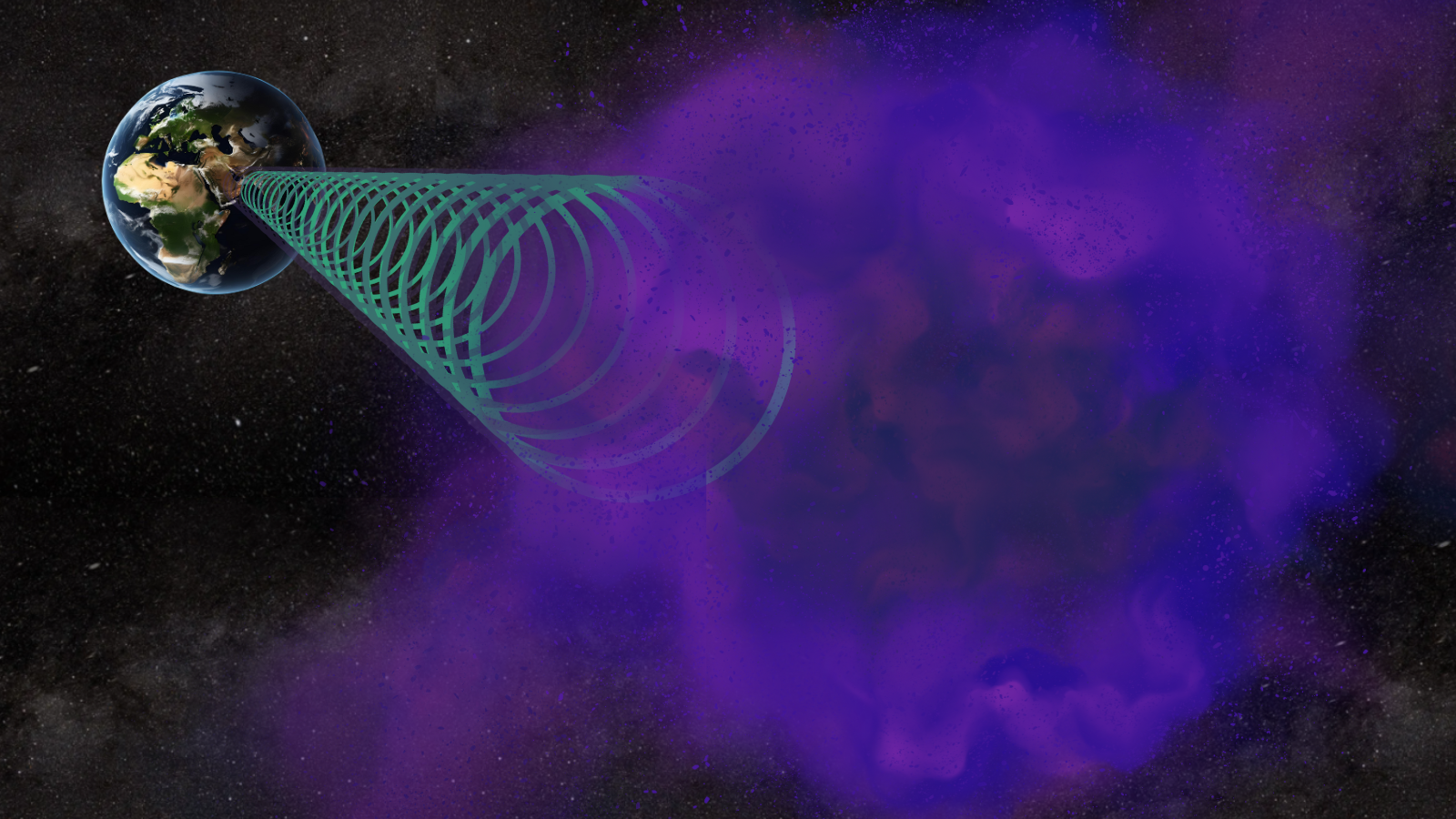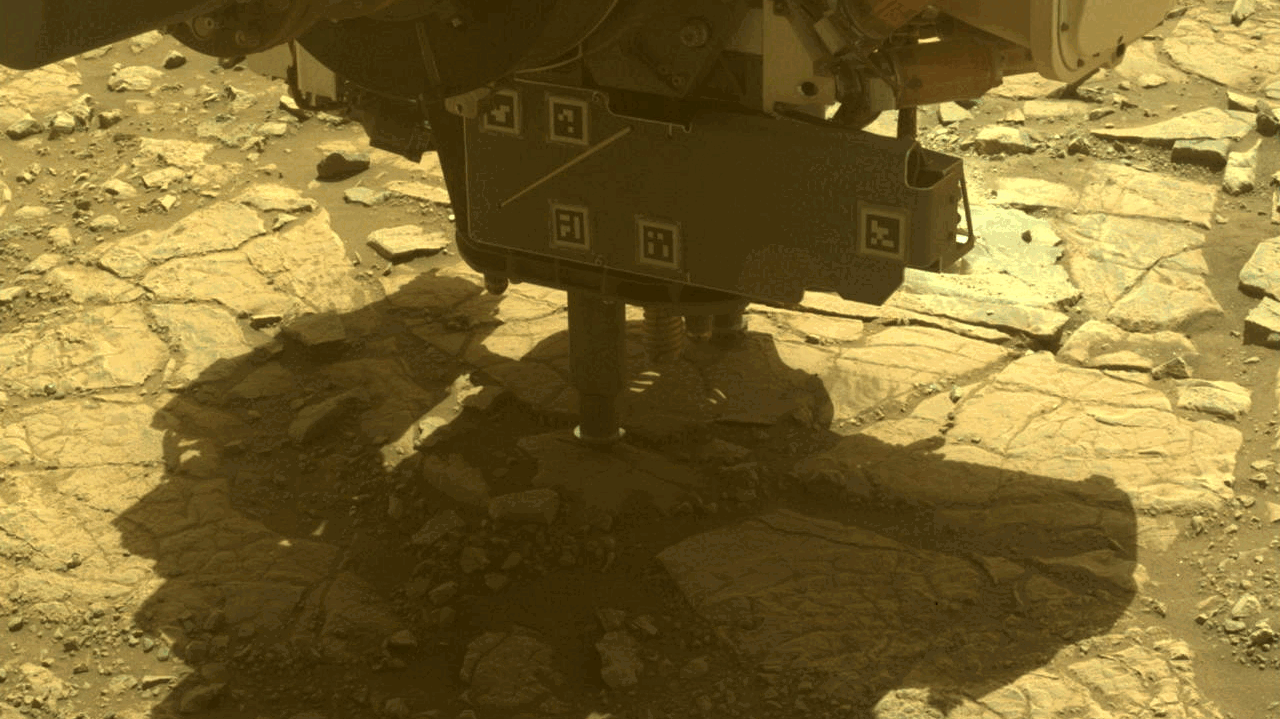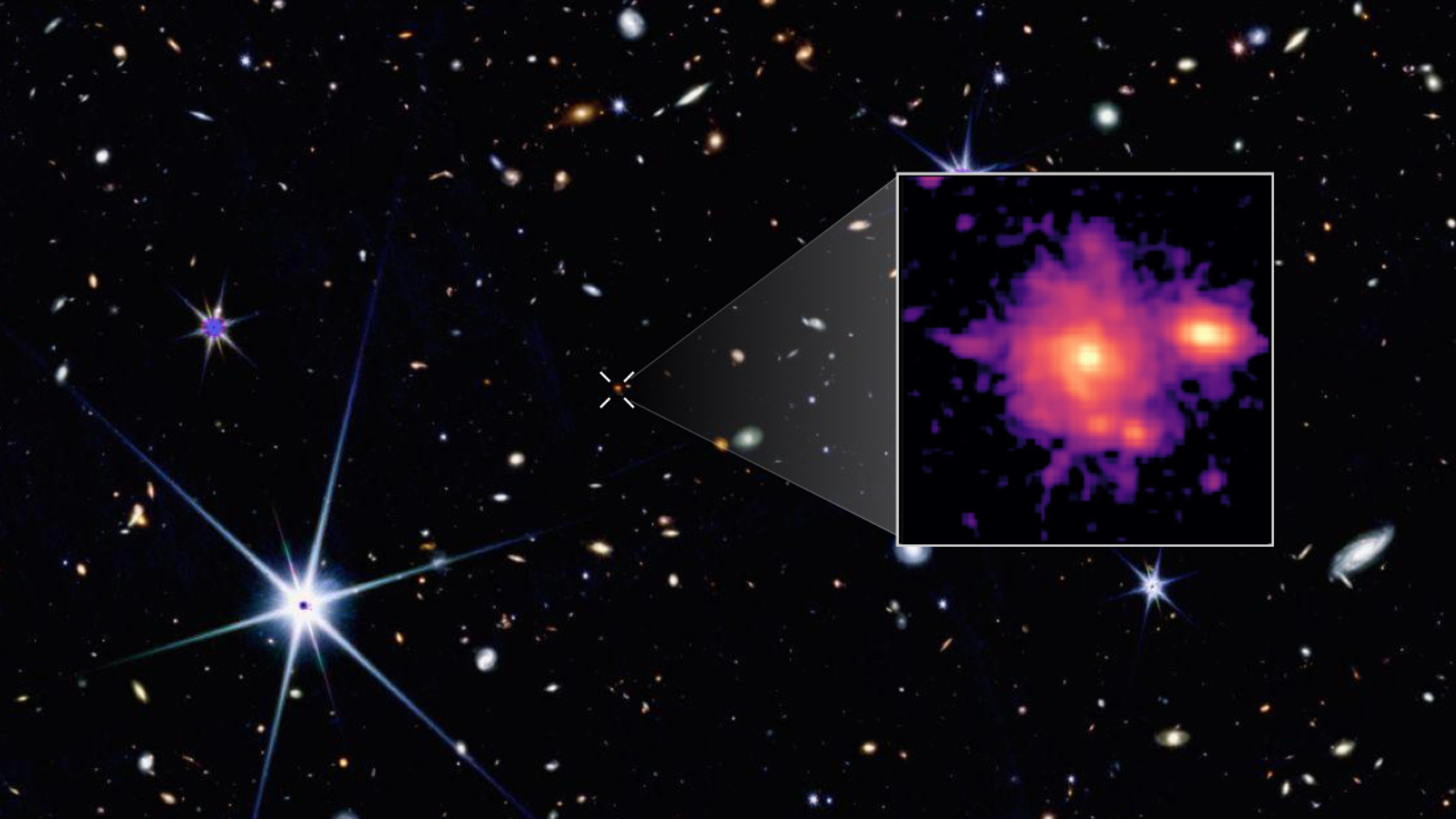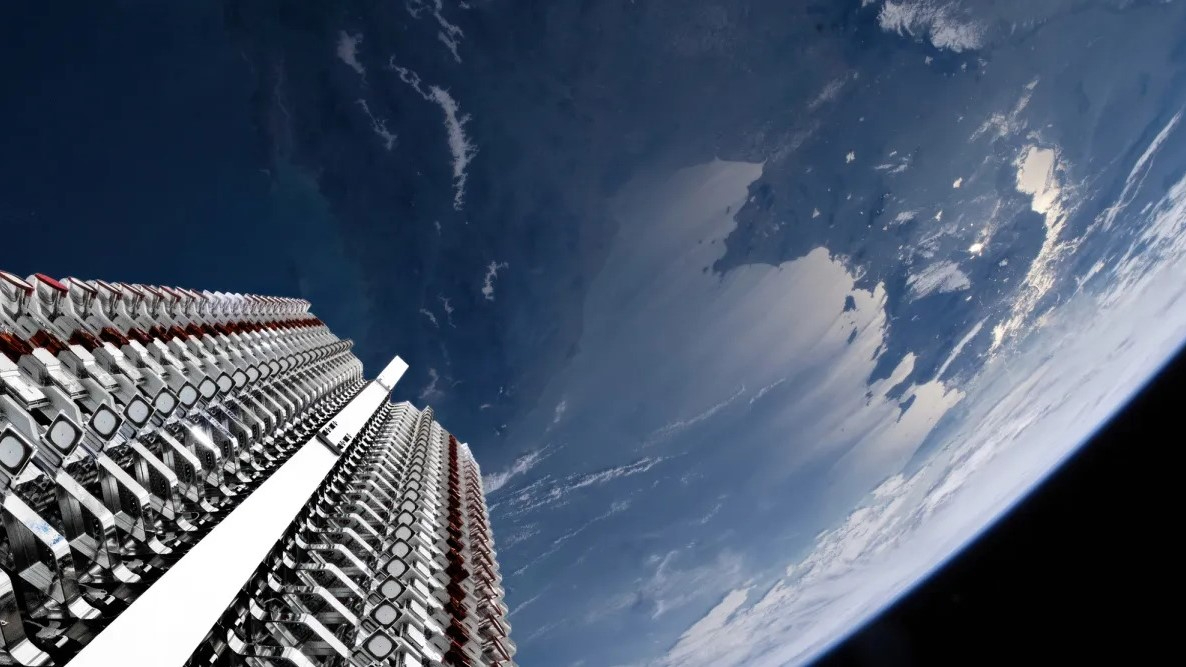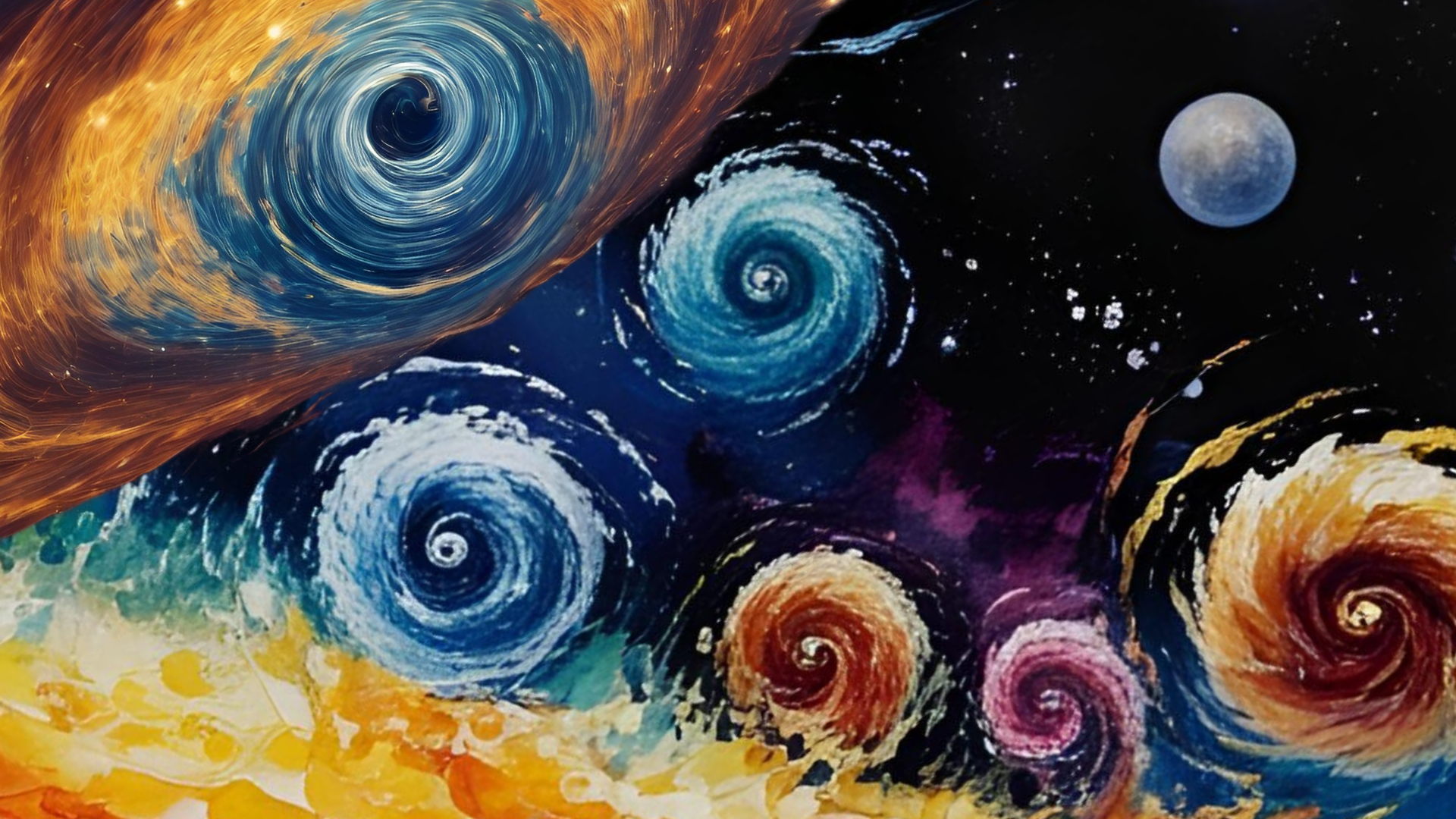NASA restarts art program with New York murals aimed at Artemis Generation
'To the Moon, and Back' illustrates 'a cosmic future with a universe of possibilities expressed through the dreams and aspirations of children.'
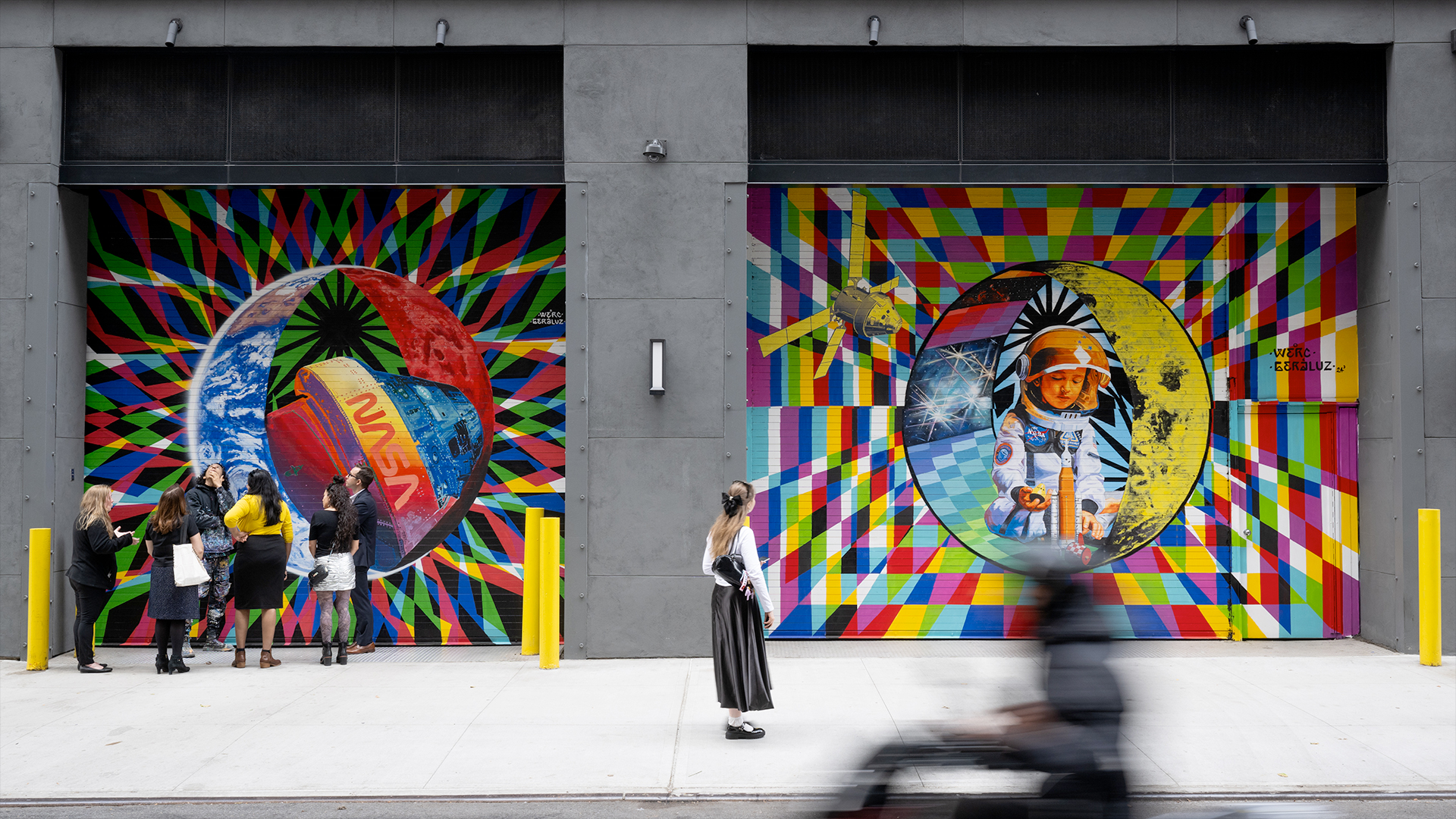
As NASA works to return astronauts to the moon, the space agency is resurrecting an Apollo-era program aimed at communicating the cultural significance of its missions.
A new era for the NASA Artist's Cooperation Program, or NASA Arts Program as it came to be known, has begun with two space-themed murals now on public view in New York's Hudson Square neighborhood in Manhattan. Created in cooperation with the Hudson Square Business Improvement District, the two colorful side-by-side murals titled "To the Moon, and Back," were painted by the New York-based team of Geraluz and WERC.
"I am thrilled that NASA's Art Program is returning with such an impactful project that will inspire the next generation — the Artemis Generation — to be curious, dream big and hopefully join us in our work at NASA someday," said Pam Melroy, NASA's deputy administrator and a former astronaut, in a statement.
"To continue pushing the boundaries of discovery and exploration, we'll need future generations to think critically and use creativity and ingenuity to solve some of our biggest challenges, and art is essential in preparing young minds for this task," she said on Tuesday (Sept. 24).

"To the Moon, and Back" illustrates "a cosmic future with a universe of possibilities expressed through the dreams and aspirations of children," according to NASA's description of the work. The use of geometrical patterns "invites deeper reflection on the exploration, creativity and our connection with the cosmos."
Related: NASA's Artemis program: Everything you need to know
Gera "Geraluz" Lozano and Jari "WERC" Alvarez of Brooklyn were selected for the project through an open call for New York-based artists. Their past work includes murals for the National Audubon Society, the New York City Department of Transportation and Sony Pictures.
Part of the couple's inspiration for the NASA murals was their five-year-old son.
"Amaru says he wants to be an astronaut; it was the perfect moment to ask him to dress up and help us conceptualize our design," wrote Lozano on Instagram. "We had a vision when we saw the RFQ [request for questions]."
The artists received a small award to cover their design fees, materials, labor and equipment.
The funds were provided by NASA and then matched by Hudson Square Business Improvement District (BID), a nonprofit that has worked for five years to transform Manhattan's former Printing District into a "thriving creative hub."
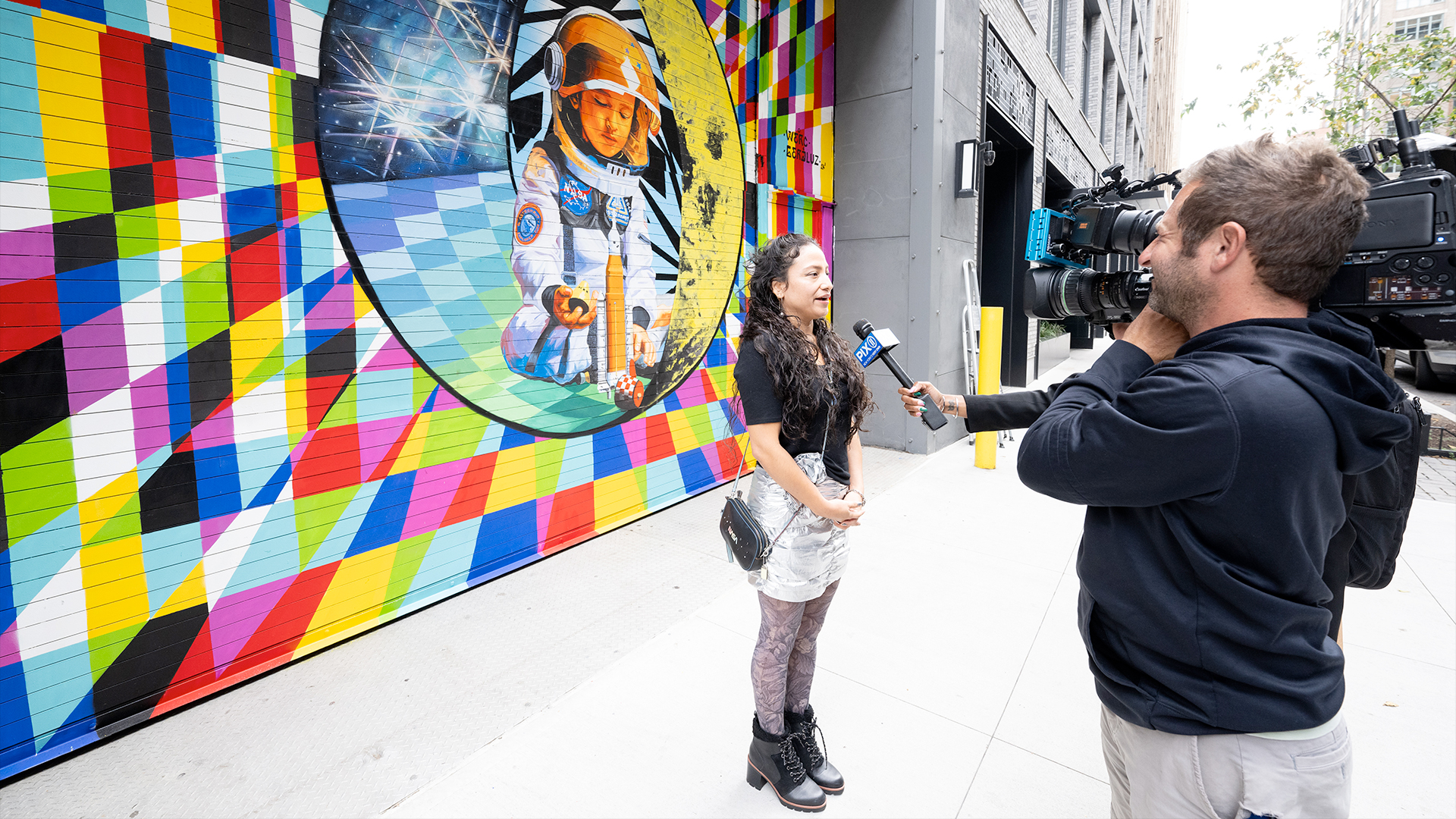
"We are thrilled to partner with NASA on this visionary project, bringing together the exciting world of space exploration and the vibrant, creative energy of Hudson Square," said Samara Karasyk, president of Hudson Square BID. "This installation is not just a celebration of NASA's incredible mission, but a continuation of our commitment to transforming the public realm through groundbreaking public art."
"It will inspire the next generation, ignite curiosity about space exploration and strengthen our neighborhood's identity as a limitless hub for creativity, mirroring the infinite possibilities of outer space. We can't wait to see how this installation captivates both locals and visitors alike," said Karasyk.
The NASA Art Program was founded in 1962 and included works created by the likes of Paul Calle, Robert McCall, Norman Rockwell, Andy Warhol, Robert Rauschenberg and Annie Leibovitz. NASA donated about 2,000 of the program's Apollo-era pieces to the Smithsonian's National Air and Space Museum in the 1970s. Most of the space shuttle-period works are still held at Kennedy Space Center in Florida today.
Under the Artemis program, NASA is aiming to land the first woman, first person of color and next American on the moon. Together with its international partners, NASA intends to explore the lunar south pole while gaining the skills needed to send humans to Mars.
The two "To the Moon, and Back" murals are located at 350 Hudson Street in New York City, on the outside of a nine-floor office building built in 1927.
Follow collectSPACE.com on Facebook and on Twitter at @collectSPACE. Copyright 2024 collectSPACE.com. All rights reserved.
Get the Space.com Newsletter
Breaking space news, the latest updates on rocket launches, skywatching events and more!
Join our Space Forums to keep talking space on the latest missions, night sky and more! And if you have a news tip, correction or comment, let us know at: community@space.com.

Robert Pearlman is a space historian, journalist and the founder and editor of collectSPACE.com, a daily news publication and community devoted to space history with a particular focus on how and where space exploration intersects with pop culture. Pearlman is also a contributing writer for Space.com and co-author of "Space Stations: The Art, Science, and Reality of Working in Space” published by Smithsonian Books in 2018.In 2009, he was inducted into the U.S. Space Camp Hall of Fame in Huntsville, Alabama. In 2021, he was honored by the American Astronautical Society with the Ordway Award for Sustained Excellence in Spaceflight History. In 2023, the National Space Club Florida Committee recognized Pearlman with the Kolcum News and Communications Award for excellence in telling the space story along the Space Coast and throughout the world.

